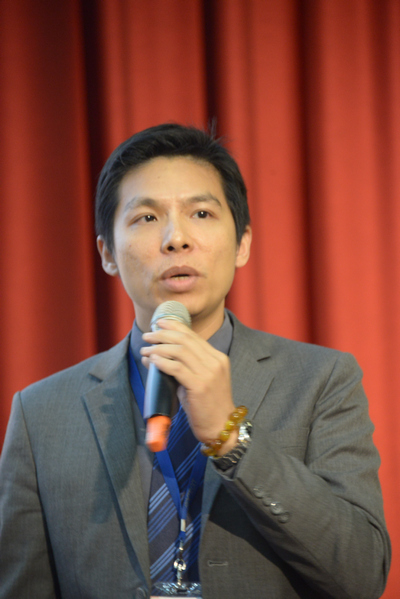Philips decision to spin-off Philips Lumileds, automotive lighting and later lighting business in mid-2014 was mainly caused by emergence of Chinese LED manufacturers, and rapid market changes, said Roger Chu, Research Director of LEDinside at LEDforum 2014 held in Taipei, Taiwan on Oct. 24, 2014.
Chinese manufacturers’ aggressive pricing strategies, and large production volume are a threat to many international LED manufacturers. Viewed individually, Chinese LED package manufacturers revenue might be lower than Taiwanese LED manufacturers Lite-On and Everlight, but the combined production capacity of Chinese package manufacturers is huge, said Chu. “China’s LED package revenue has increased from 11% in 2009 to 18% in 2014.”
 |
|
Roger Chu, Research Director of LEDinside speaks at LEDforum 2014 in Taipei, Taiwan in last month. (LEDinside) |
A cross comparison also reveals Chinese manufacturers chip revenue is larger than Taiwanese manufacturers, and has overtaken Taiwan’s position as the world’s top LED chip producer, he added. Low-price strategies have led to the LED chip market trend of shifting from high-power LEDs to mid-power LEDs with high Cost/Performance ratios.
Chinese manufacturers have been able to launch low pricing strategies in LED chip sector by turning to standardization to enable economics of scale production, and relying on domestic manufacturing to bring down costs. This has been evident in the development of 2835 LED, which has a high C/P of 1,385 lm/$ for 0.2W chips, and Average Sale Price (ASP) of US $0.013. In response, other traditional 3030 LED Asian manufactures, such as Korean, Japanese, and Taiwanese manufacturers are also shifting towards 2835 LED production.
To further drive down manufacturing costs, some vendors are turning to automated manufacturing. “Not all LED manufacturers can meet automated production requirements, due to the high level of capital and investment required,” said Chu. A manufacturer usually needs to have monthly production capacity of at least 10 million to 15 million bulbs to qualify for automated production lines. The result is large manufacturers with better financing are able to install automated production lines and drive down production costs.
 |
|
Roger Chu, Research Director of LEDinside. (LEDinside) |
Those that cannot afford automated production are adopting more innovative solutions. A lighting alliance launched by Chinese LED manufacturer Dark Energy is further driving LED components standardization in the Chinese market to bring down LED lighting production costs to RMB 11 (US $1.80). The alliance with over 20 members will negotiate standard LED specs, actual production volume, and even product pricing. Alliance members supply components, while the alliance will find distributor partners who decide the product’s final retail price. “This (model) will really hurt the market, and will impact some Chinese manufacturers,” said Chu.
Niche markets, such as smart lighting, have become an alternative for manufacturers seeking for a way out of pricing competitions. Yet, there are still many uncertainties in the smart lighting sector, such as different communication protocols including Zigbee, Bluetooth, and WiFi as well as incompatible independent operation platforms. “I think LED lighting will only be playing a small role in smart lighting,” said Chu. “It can be possible that the future main players in smart lighting are actually platform operators, or large electronic conglomerates like Apple or Google.”
Intensive price competitions in Asia has resulted in the research organization’s conservative high brightness (HB) LED market growth outlook. Compared to U.S. or European institutes more optimistic outlook, LEDinside projected the HB LED market will only grow at 3% CAGR from 2014-2018 to reach US $16.2 billion. “We are based in Asia, and our first hand observations of the price competition here has led us to believe it will be difficult to keep up high growth rates,” explained Chu. “Also LEDs long lifetimes indicate a slower replacement cycle.”
LEDinside shared a similar outlook as major market research organizations that lighting applications will continue to be a major market driver in the LED industry. “LED lighting application volume has already overtaken backlight and package market in 2014,” said Chu. “We have observed replacement light sources such as bulbs and tubes are spurring the LED lighting application market developments.” The research institute estimated LED lighting market value will reach US $20 billion in 2014.
(Author: Judy Lin, Chief Editor, LEDinside)













